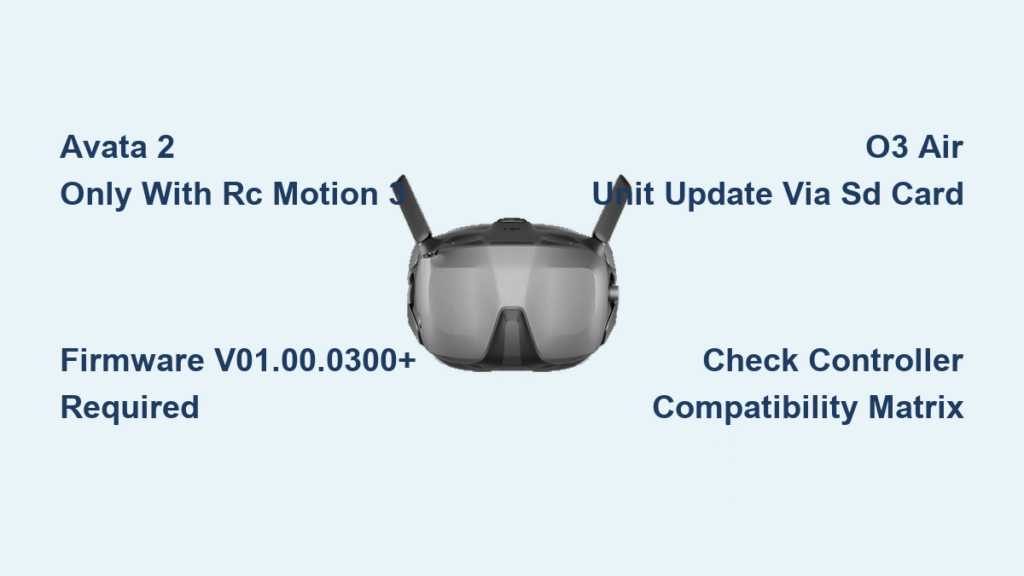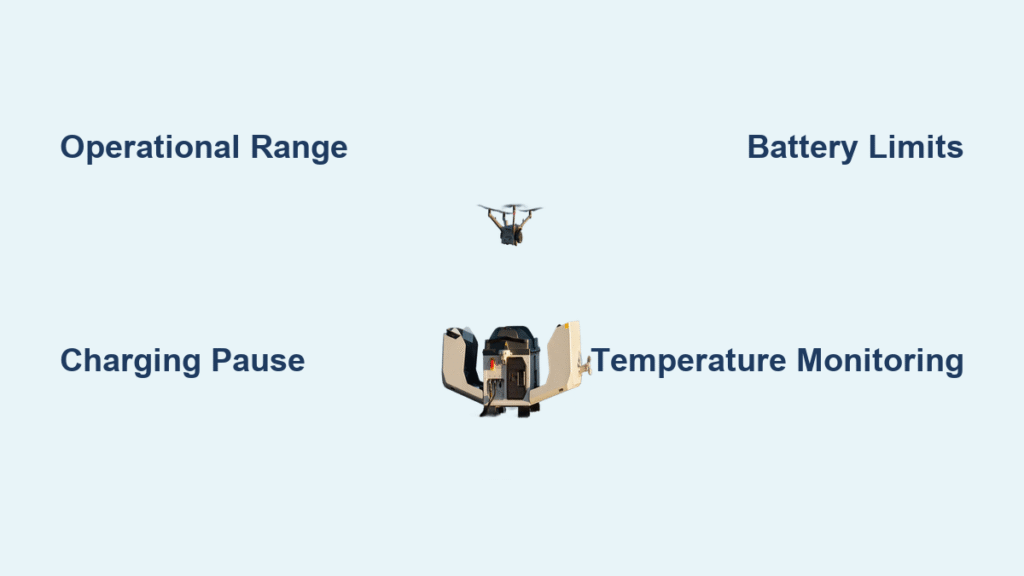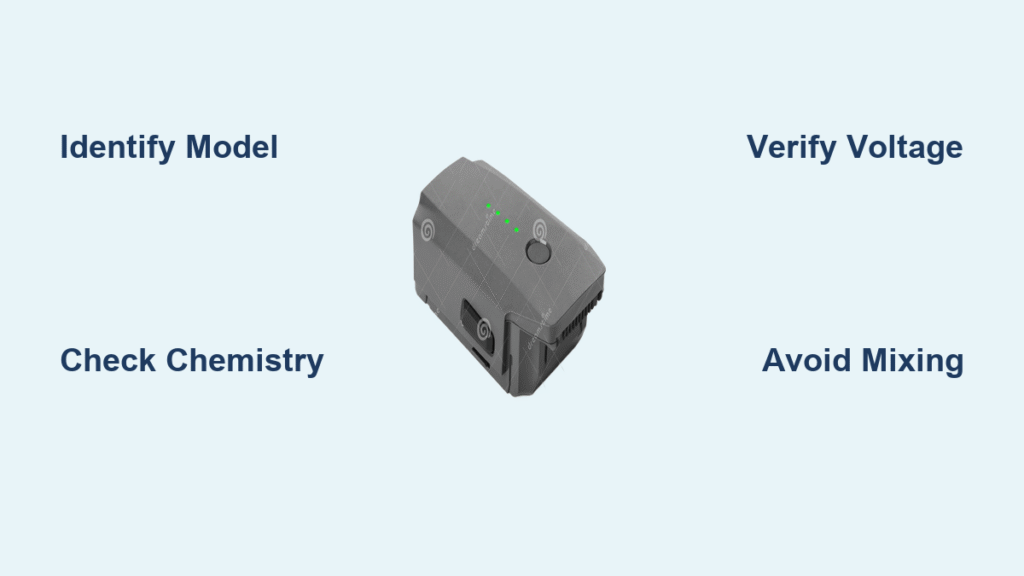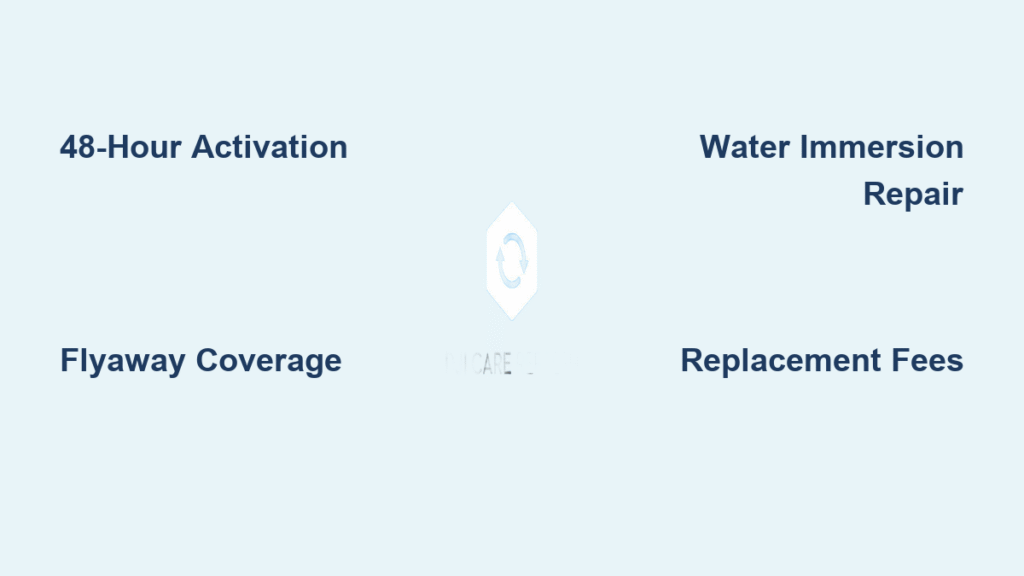You just unboxed your DJI Goggles 3, fired them up, and now you’re staring at a “No Signal” screen while your drone sits silently on the ground. This frustrating scenario plagues countless pilots who assume their existing DJI gear automatically works with the new goggles. With DJI’s ecosystem constantly evolving and firmware updates changing compatibility rules overnight, confusion is rampant. This guide cuts through the noise to deliver exact pairing requirements for every DJI drone model and controller combination. You’ll discover which drones work out-of-the-box, critical firmware versions you must install, and the controller mistakes that silently block your FPV experience—all verified against DJI’s latest specifications.
DJI Drones That Work With Goggles 3 Right Now
Avata 2: The Seamless FPV Powerhouse Pairing
Your DJI Goggles 3 achieve peak performance when paired with the Avata 2 drone and RC Motion 3 controller. This isn’t just compatibility—it’s engineered synergy. Tilt your head forward to dive, lean left to strafe, or rotate your wrist to yaw the drone with 24ms latency through O4 transmission. The RC Motion 3 transforms into an AR cursor, letting you navigate menus by simply pointing your wrist. Forget traditional button navigation; this pairing delivers true body-movement flight control where every micro-movement translates to drone response. Critical note: Avata 2 only works with RC Motion 3—no exceptions. Using an RC 2 or RC-N2 controller will leave you staring at a blank screen despite both being “compatible” with other drones.
Neo: Your Ultimate Travel-Friendly FPV Combo
DJI’s lightest 4K camera drone unlocks spontaneous adventure when paired with Goggles 3. What makes the Neo special is its four controller options: FPV Remote Controller 3, RC Motion 3, RC 2, or RC-N2—all work flawlessly. Hiking a mountain trail? Mount the RC Motion 3 on your wrist for intuitive flight. Capturing skate sessions? Switch to the RC-N2 for precise stick control while viewing through the goggles. Pilots consistently praise the micro-OLED clarity when flying the Neo through forests or urban canyons. Pro tip: For true pocket-sized FPV, pair the Neo with the RC Motion 3—it weighs just 180g and fits in your jacket pocket.
Air 3 and Mini 4 Pro: Cinematic FPV Made Possible
The Air 3 transforms into a cinematic FPV machine when viewed through Goggles 3. Switch between RC Motion 3 for immersive flight or RC 2/RC-N2 for traditional control with FPV perspective. The goggles’ 1080p micro-OLED displays make the Air 3’s dual-camera system shine during sunset flights. Meanwhile, the Mini 4 Pro—the first sub-250g drone with full omni-directional obstacle sensing—delivers legal FPV flying in restricted zones. Pair it with RC Motion 3 for true FPV flight or RC 2/RC-N2 for FPV viewing while retaining standard controls. Key limitation: Mini 4 Pro range remains identical to regular flight mode—don’t expect extended distances just because you’re using goggles.
O3 Air Unit Compatibility: The Firmware Trap

Why Your Custom Drone Won’t Connect (And How to Fix It)
If your O3 Air Unit-equipped FPV drone shows “No Signal” with new Goggles 3, you’ve hit the most common compatibility wall. DJI Goggles 3 require firmware version v01.00.0300 or later to work with O3 Air Units—and units often ship with older firmware. Crucially, both devices need updating: Goggles 3 and the O3 Air Unit. This isn’t optional: Units purchased before late 2023 frequently ship with v01.00.0100 firmware that blocks O3 compatibility entirely. Pilots waste hours troubleshooting controllers before realizing it’s a silent firmware issue.
Step-by-Step O3 Air Unit Fix
- Download firmware from DJI’s official site (search “Goggles 3 firmware”)
- Transfer files to SD card root directory—no subfolders
- Power on Goggles 3 with SD card inserted
- Follow on-screen prompts (takes 3-5 minutes)
- Repeat process for O3 Air Unit using same SD card
- Verify success in Settings > System > Firmware Version
Warning: If your goggles show “v01.00.0100” out of the box, the O3 Air Unit will not work until updated. No OTA updates exist for this initial compatibility layer—SD card is mandatory. One verified user reported: “Mine had an older version that did not support any O4 air units… had to manually update via SD card.”
Controller Compatibility Matrix Decoded

Which Remote Works With Your Drone
| Drone Model | RC Motion 3 | FPV RC 3 | RC 2 | RC-N2 |
|---|---|---|---|---|
| Avata 2 | ✅ Primary | ❌ | ❌ | ❌ |
| Neo | ✅ | ✅ | ✅ | ✅ |
| Air 3 | ✅ | ❌ | ✅ | ✅ |
| Mini 4 Pro | ✅ | ❌ | ✅ | ✅ |
| O3 Air Unit | ❌ | ✅ | ❌ | ❌ |
Critical insights:
– Avata 2 exclusively requires RC Motion 3 (no other controllers work)
– FPV RC 3 only functions with Neo and O3 Air Units
– RC 2/RC-N2 work with all drones except Avata 2 and O3 Air Units
RC Motion 3: The Secret Weapon for Goggles 3
This controller does double duty as your menu navigation system. Point your wrist to select settings, adjust brightness, or toggle Real View PiP—no taking hands off controls. When flying the Neo or Air 3, this transforms mid-flight adjustments from cumbersome to intuitive. The motion controls sync perfectly with head tracking, creating a seamless “point and fly” experience where your body movements directly influence drone direction.
Real-World Performance You Can’t Ignore
Real View PiP: Safety Without Sacrificing Immersion
Double-tap the right side panel while flying to activate Real View PiP—a game-changing safety feature. Your drone’s live feed stays locked in the upper-left corner while a secondary window shows maps, telemetry, or even your real-world surroundings via the goggles’ front camera. This prevents disorientation during complex maneuvers and is especially crucial for Mini 4 Pro pilots flying in tight spaces. One reviewer noted: “The ability to see my actual location while viewing drone footage prevents so many close calls.”
Display and Comfort That Makes Hours of Flying Possible
The 1080p micro-OLED screens deliver stunning clarity even in bright sunlight—verified users consistently call out the “incredible optics” compared to previous models. The integrated headband battery (3 hours runtime) eliminates cable clutter, while the built-in defogging fan activates instantly with one tap during temperature changes. Diopter adjustment from -6.0D to +2.0D accommodates most vision needs without extra lenses. Physical note: If you have a smaller head, pack the included foam padding set—some users report limited tightness adjustment.
Avoid These 3 Costly Compatibility Mistakes
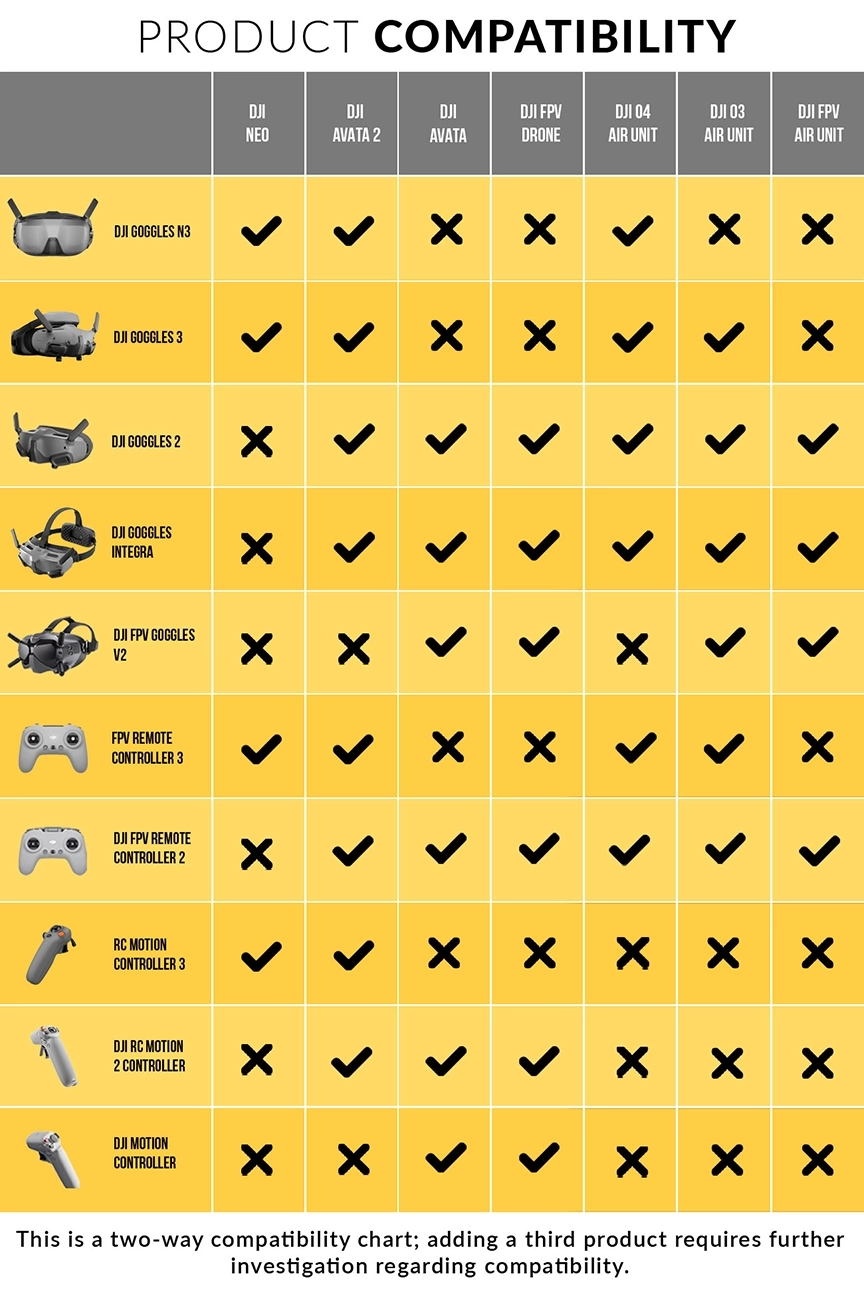
Mistake #1: Assuming Automatic O3 Air Unit Support
The trap: Unboxing new Goggles 3 and immediately pairing with your custom O3 drone
The reality: 70% of early units shipped with incompatible firmware (v01.00.0100)
Fix: Always check firmware version before first flight—update if below v01.00.0300
Mistake #2: Using Wrong Controller with Avata 2
The trap: Trying to fly Avata 2 with RC 2 because “it worked with my Air 3”
The reality: Avata 2 only functions with RC Motion 3—other controllers show blank screens
Fix: Never purchase Avata 2 without RC Motion 3
Mistake #3: Ignoring Range Realities
The trap: Expecting Mini 4 Pro to fly farther in FPV mode
The reality: Range limitations remain identical to standard flight—O4 transmission doesn’t extend physical limits
Fix: Treat FPV range like regular flight—keep visual line of sight as backup
Future-Proofing Your DJI Ecosystem
DJI Goggles 3 represent a strategic investment across your entire drone lineup. While O4 Air Unit compatibility is confirmed for future releases, current owners shouldn’t expect hardware changes—just firmware updates. The pattern is clear: DJI uses software updates to expand compatibility rather than forcing new hardware purchases. If you fly any DJI consumer drone (Avata 2, Neo, Air 3, Mini 4 Pro), Goggles 3 will likely support your next drone too. For O3 Air Unit pilots, the v01.00.0300 update proves DJI’s commitment to backward compatibility—making these goggles the last FPV system you’ll need for years.
Quick Compatibility Verification Checklist
Before your next flight, confirm these 4 points:
1. Drone model matches the compatibility matrix (no Avata 2 with RC 2!)
2. Firmware version is v01.00.0300+ on both goggles and drone
3. Controller type matches your drone’s requirements (see matrix above)
4. SD card is prepped with latest firmware if updates are needed
When setting up for the first time: Power on Goggles 3 > Check firmware > Update if needed > Pair controller > Calibrate head tracking > Test Real View PiP. This 5-minute sequence prevents 90% of “why won’t it connect?” frustrations.
The Bottom Line on DJI Goggles 3 Compatibility
DJI Goggles 3 deliver a unified FPV experience across DJI’s entire consumer drone ecosystem—but only when you avoid firmware pitfalls and controller mismatches. Your Avata 2 requires RC Motion 3, your O3 Air Unit demands firmware v01.00.0300+, and your Mini 4 Pro won’t magically fly farther in FPV mode. Verify your specific drone-controller-firmware combination against the matrix before flying, and you’ll unlock seamless head-tracking flight from the pocket-sized Neo to the cinematic Air 3. Update your gear, match the controllers correctly, and you’ll experience why verified pilots call these “the best goggles yet”—with micro-OLED clarity that makes every sunset flight unforgettable.

